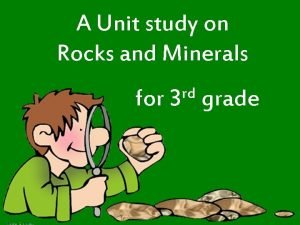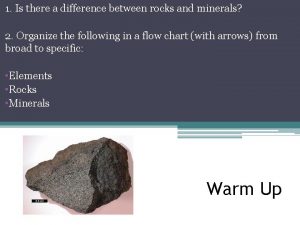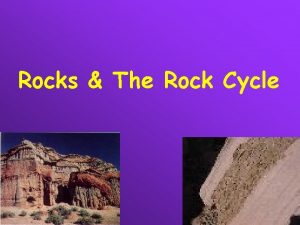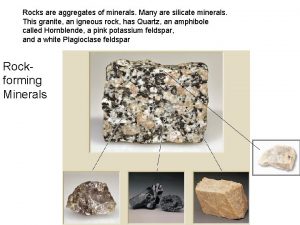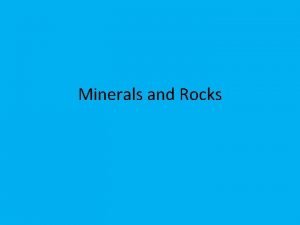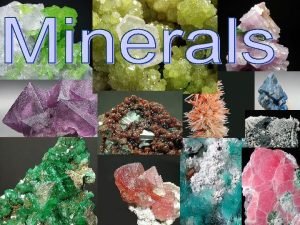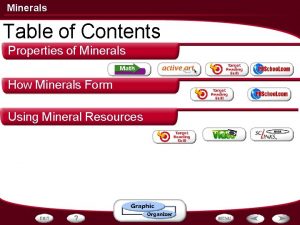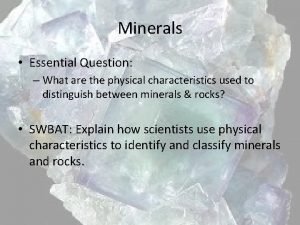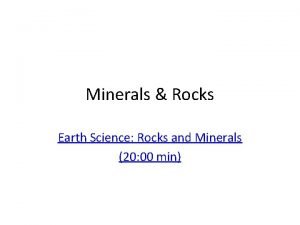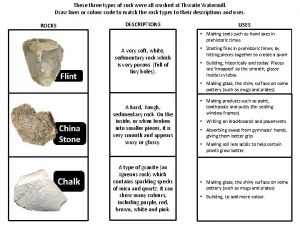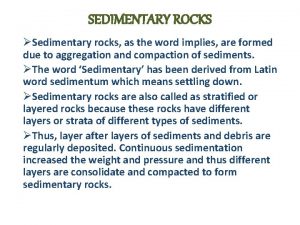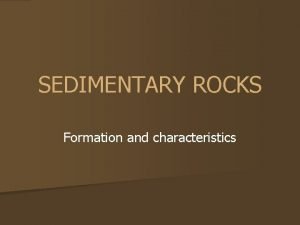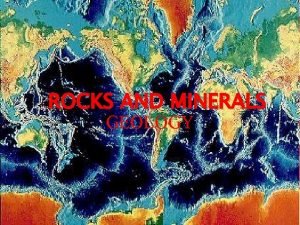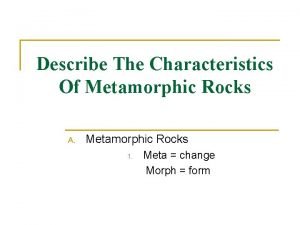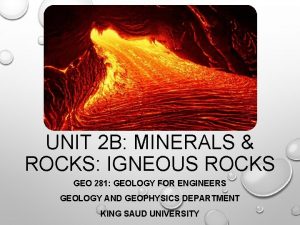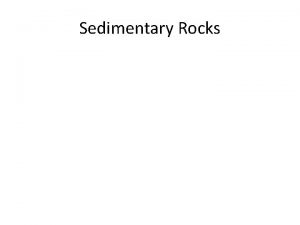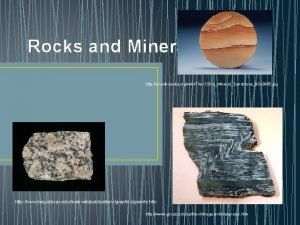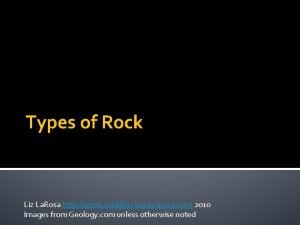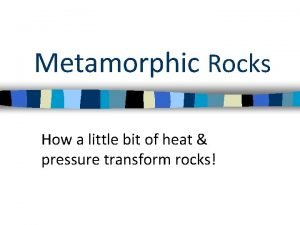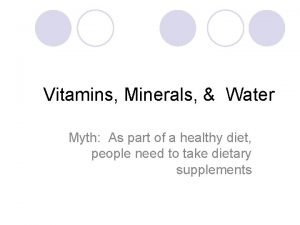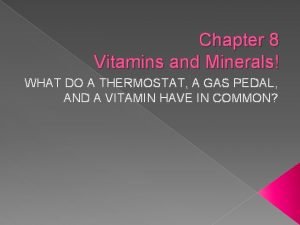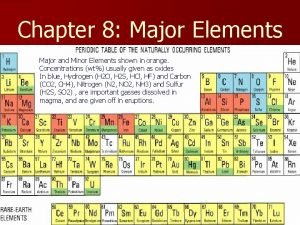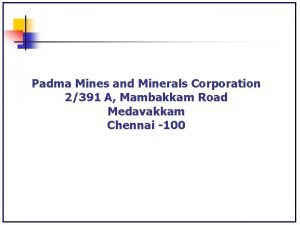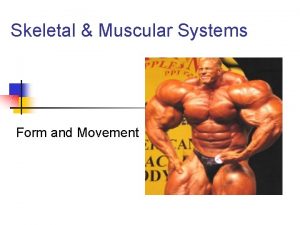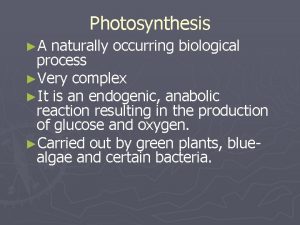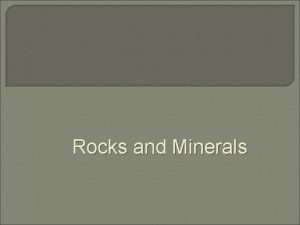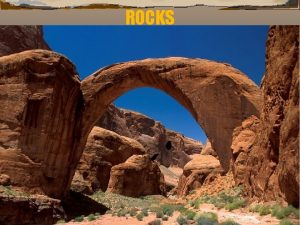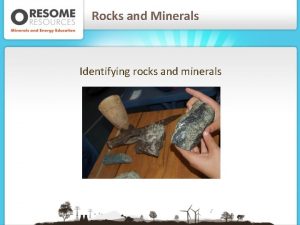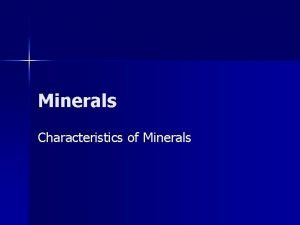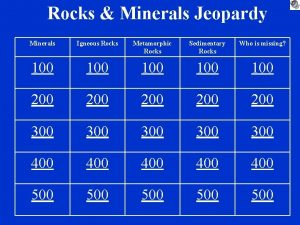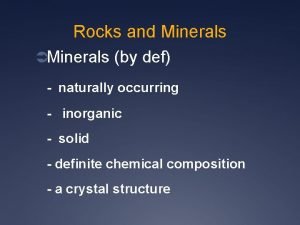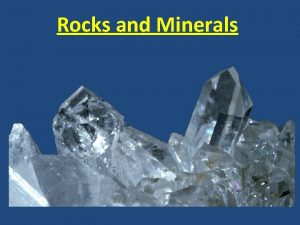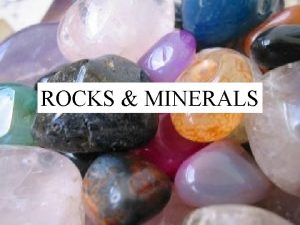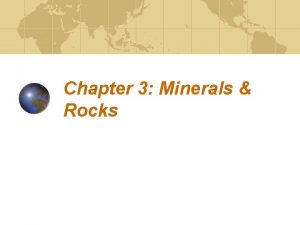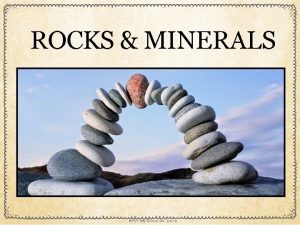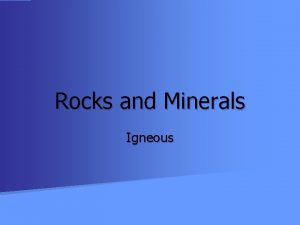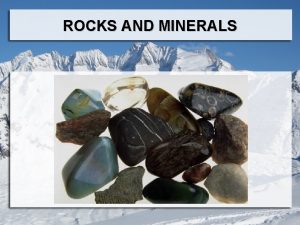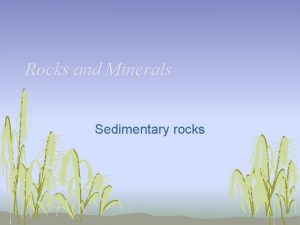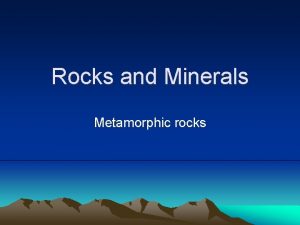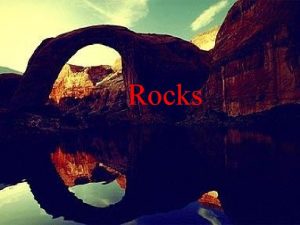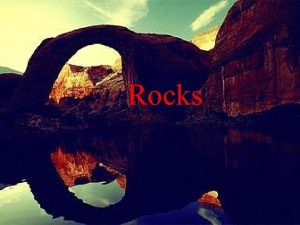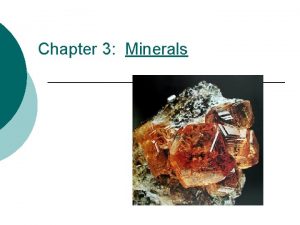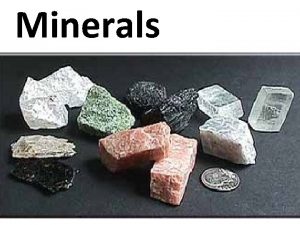Minerals and Rocks 5 Characteristics of Minerals Naturally













































- Slides: 45

Minerals and Rocks

5 Characteristics of Minerals • • • Naturally Occurring Inorganic Found as a solid in nature Formed from elements or compounds Definite chemical make up and regular atomic structure

By that definition… • Is a snow flake a mineral?

A. • Minerals are classified according to their physical and chemical properties.

Physical Properties • 1) Color: easiest to recognize but not very reliable – Example: quartz- comes in several different colors – Example: calcite and halite- both can be transparent and/or same color

Physical Properties • 2) Streak- the color of a mineral when powdered – Test: rub the mineral across a piece of unglazed ceramic tile

Physical Properties • 3) Luster: the way a mineral reflects light – Metallic- looks like shiny metal – Non-Metallic- does not look like shiny metal (can be dull, waxy, glassy, etc)

Physical Properties • 4) Hardness: a minerals ability to scratch or be scratched – Test: Use an edge of your mineral and try to scratch a glass plate – Moh’s hardness scale: 10 common minerals placed in order of hardness • The higher the number the harder the mineral

Physical Properties • 5) Cleavage: the tendency of a mineral to split along smooth, flat surfaces called plains – Test: Look at the mineral carefully and check for light reflecting off of flat surfaces

Physical Properties • 6) Fracture: When a mineral breaks into pieces with uneven surfaces

Physical Properties • 7) Specific gravity: the ratio between the weight of a substance and the weight of the substance in an equal volume of water

Physical Properties • 8) Special Properties: unique properties some minerals have – Examples: Halite- tastes salty • Magnetite- magnets are attracted to it • Calcite- bubbles with HCL (acid test)

B. • Minerals are grouped according to their chemical properties • 1. The elements silicon and oxygen combine to form tetrahedral units

• 2. The physical properties of minerals depend upon the internal arrangement of atoms. • Diamond- Jewelry, Cutting hard surfaces • Graphite- pencil lead, lubricant • Both 100% carbon

• 3. Of the thousands of known minerals, only a few are found almost everywhere

• 4. If you know how to identify about 12 of the most common minerals you will be able to identify minerals in most rocks you are likely to find.

• 5. Nearly all rocks are composed of one or more minerals

• 6. Minerals are the building blocks of most rocks. – Some exceptions include coal.

• Stuff away • Characteristics of a mineral • Physical Properties of a mineral


Igneous rocks • Solidification of molten material (magma) • Named based upon their environment of formation.

Intrusive Igneous Rocks • • AKA. Plutonic Rate of cooling: slow to very slow Size of crystals: 1 mm to more than 10 mm Texture: Coarse/very coarse

Extrusive Igneous Rocks • AKA. Volcanic • Rate of cooling: fast to very fast • Size of crystals: less than 1 mm to noncrystalline • Texture: glassy/fine



Vesicular • Gas bubbles

Felsic

Mafic

Non-crystalline • No visible crystals

Sedimentary Rocks • Deposition, burial, compaction and cementation of sediments

Clastic Sedimentary Rocks • Classified by grain size. • Formed by: deposition, burial, compaction and cementation of sediments • Ex: Siltstone, sandstone, conglomerate, breccia, shale

Crystalline Sedimentary Rocks • Classified by composition • Formed by: compaction and cementation. Crystals from chemical precipitates and evaporates • Ex. Rock salt, gypsum, dolostone

Bioclastic sedimentary rocks • Classified by composition • Formed from: cemented shell fragments and biologic origin • Ex. Limestone • Formed from plant remains • Ex: coal

• 1) Formed in horizontal layers on Earth’s surface because that’s where all of the weathering , erosion and biologic activity takes place

• 2) Fossils are almost exclusively found in sedimentary rocks because formation of the other rock types alters or destroys them. • Igneous melts them • Metamorphic deforms them

• 3) Fossils provide…

Metamorphic Rocks • Formed directly from any type of rock • Extreme heat and pressure cause metamorphism

Changes in Rocks due to Metamorphism • • Recrystallization of unmelted material Density increases Foliation- minerals are aligned Banding- thin layers of alternating minerals

Regional Metamorphism • Occurs when large areas of rock are under intense heat and pressure • Associated with mountain building

Contact Metamorphism • Occurs when molten rock comes in contact with surrounding rock • Heat alters the rock it comes in contact with • Helps to establish relative ages of rocks

Classification of Metamorphic Rocks • Texture- including foliated or banding composition

Degree of metamorphism • Can be a small alteration to major changes depending on the amount of heat and pressure

Parent Material • What the rock used to be before it changed

• • Shale Slate (low) Shale Phyllite (medium) Shale Schist (medium) Shale gneiss (high) • The deeper under ground, the more heat and pressure and the greater the change

The rock cycle • Continuing change from one rock type to another rock type
 Igneous and metamorphic
Igneous and metamorphic Igneous rock to metamorphic rock
Igneous rock to metamorphic rock Types of rocks song
Types of rocks song Rocks
Rocks Difference between minerals and rocks
Difference between minerals and rocks Types of rocks concept map
Types of rocks concept map Suzanna socked me sunday poem
Suzanna socked me sunday poem Difference between rocks and stones
Difference between rocks and stones Rock type
Rock type Extrusive rocks and intrusive rocks
Extrusive rocks and intrusive rocks Rhyolite and basalt
Rhyolite and basalt Minerals vs elements
Minerals vs elements Rocks are aggregates of minerals
Rocks are aggregates of minerals Characteristics of a mineral
Characteristics of a mineral Characteristics of minerals
Characteristics of minerals How minerals are formed
How minerals are formed Characteristics of minerals
Characteristics of minerals Minerals characteristics
Minerals characteristics Metamorphic rocks characteristics
Metamorphic rocks characteristics Three types of rocks
Three types of rocks Characteristics of sedimentary rocks
Characteristics of sedimentary rocks Clastic sedimentary rocks
Clastic sedimentary rocks Characteristics of metamorphic rocks
Characteristics of metamorphic rocks Sedimentary rock characteristics
Sedimentary rock characteristics Characteristics of metamorphic rocks
Characteristics of metamorphic rocks Characteristics of igneous rocks
Characteristics of igneous rocks Metamorphic rock characteristics
Metamorphic rock characteristics Attritiom
Attritiom Characteristics of igneous rocks
Characteristics of igneous rocks Rock cycle definition
Rock cycle definition How rocks form
How rocks form Esrt sedimentary rocks
Esrt sedimentary rocks Characteristics of metamorphic rocks
Characteristics of metamorphic rocks Sedimentary rock characteristics
Sedimentary rock characteristics Metamorphic rock non examples
Metamorphic rock non examples What are vitamins functions
What are vitamins functions Signing naturally page 80 answers
Signing naturally page 80 answers Chapter 8 vitamins and minerals
Chapter 8 vitamins and minerals Major and minor elements
Major and minor elements Absorbs water and minerals
Absorbs water and minerals Padma mines and minerals corporation
Padma mines and minerals corporation Stores minerals and anchors muscles
Stores minerals and anchors muscles Cumbria minerals and waste local plan
Cumbria minerals and waste local plan Minerals and fuels
Minerals and fuels Minerals and fuels
Minerals and fuels Minerals sources functions and deficiency chart
Minerals sources functions and deficiency chart




